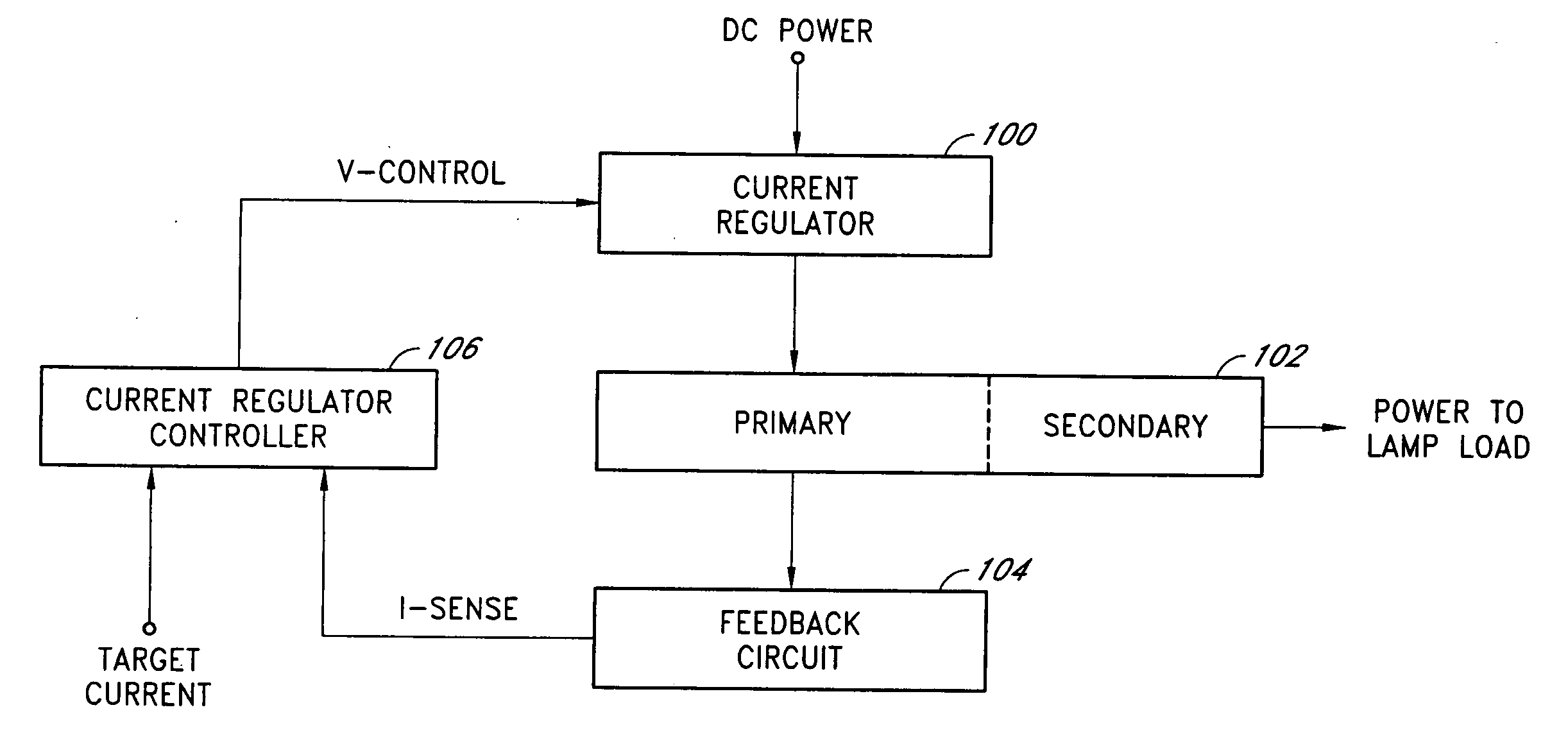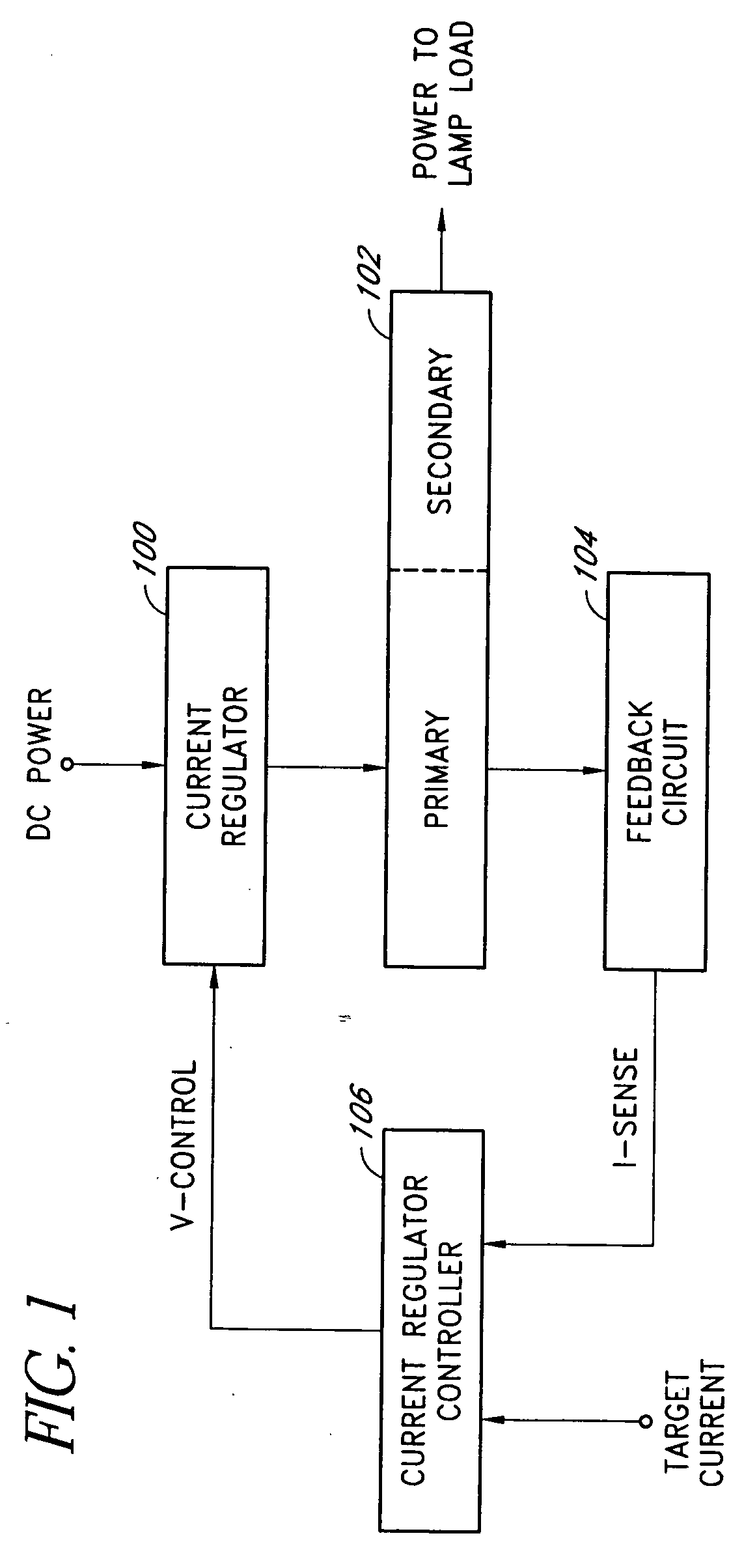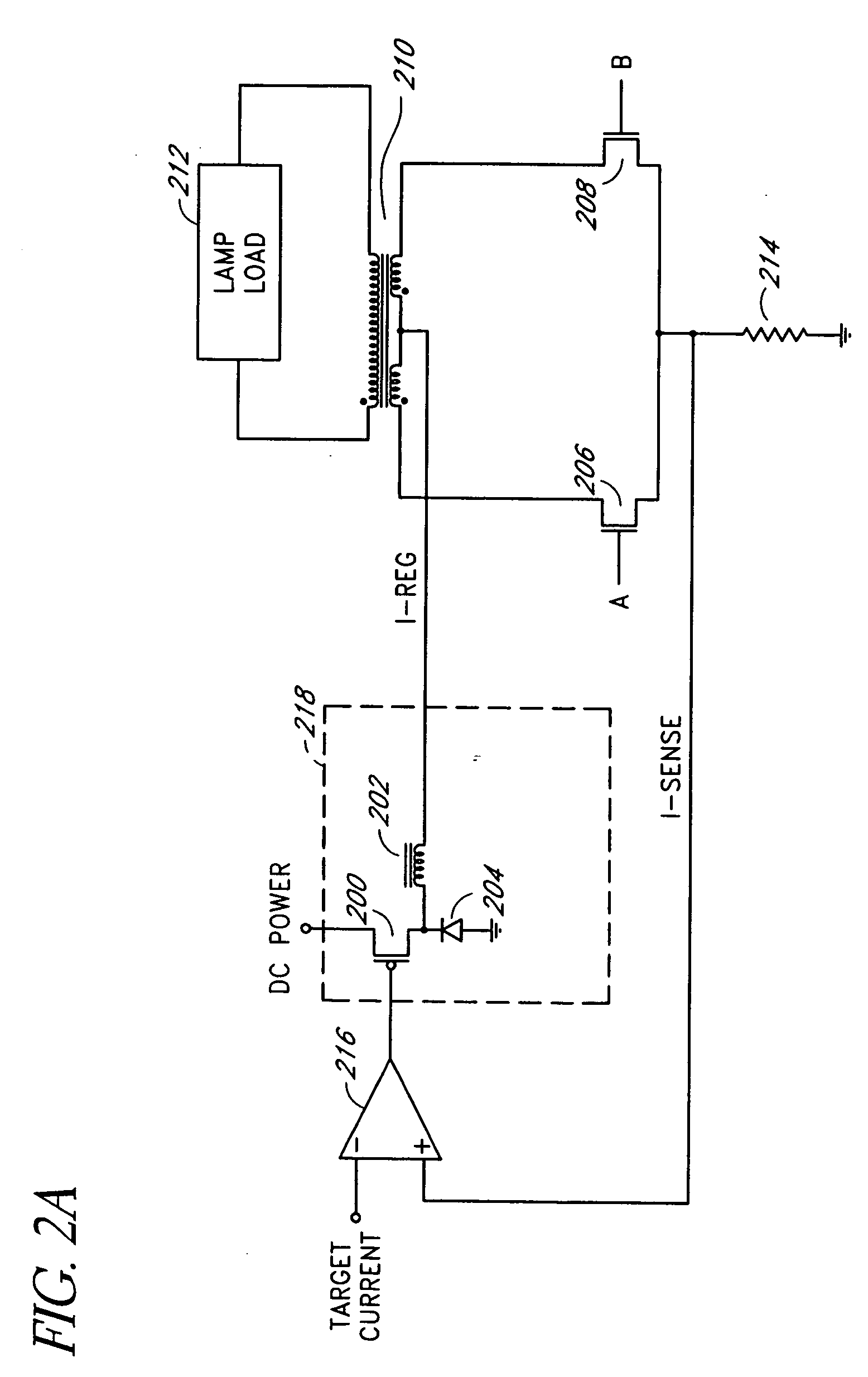Inverter with two switching stages for driving lamp
- Summary
- Abstract
- Description
- Claims
- Application Information
AI Technical Summary
Benefits of technology
Problems solved by technology
Method used
Image
Examples
Embodiment Construction
[0028] Embodiments of the present invention will be described hereinafter with reference to the drawings. FIG. 1 is a simplified block diagram of one embodiment of a current-mode inverter. The current-mode inverter includes an input current regulator 100, a polarity-switching and transformer network (or polarity reversing stage) 102, a feedback circuit 104, and a current regulator controller 106. The input current regulator 100 accepts a DC power source (e.g., a regulated or unregulated DC voltage) and generates a regulated current for the polarity-switching and transformer network 102. The polarity-switching and transformer network 102 includes semiconductor switches, such as metal-oxide-semiconductor field-effect-transistors (MOSFETs), directly coupled to a primary winding of a closely-coupled transformer. The semiconductor switches are controlled by a controller (e.g., a pulse width modulator) to periodically couple the regulated current through the primary winding in alternate s...
PUM
 Login to View More
Login to View More Abstract
Description
Claims
Application Information
 Login to View More
Login to View More - R&D
- Intellectual Property
- Life Sciences
- Materials
- Tech Scout
- Unparalleled Data Quality
- Higher Quality Content
- 60% Fewer Hallucinations
Browse by: Latest US Patents, China's latest patents, Technical Efficacy Thesaurus, Application Domain, Technology Topic, Popular Technical Reports.
© 2025 PatSnap. All rights reserved.Legal|Privacy policy|Modern Slavery Act Transparency Statement|Sitemap|About US| Contact US: help@patsnap.com



